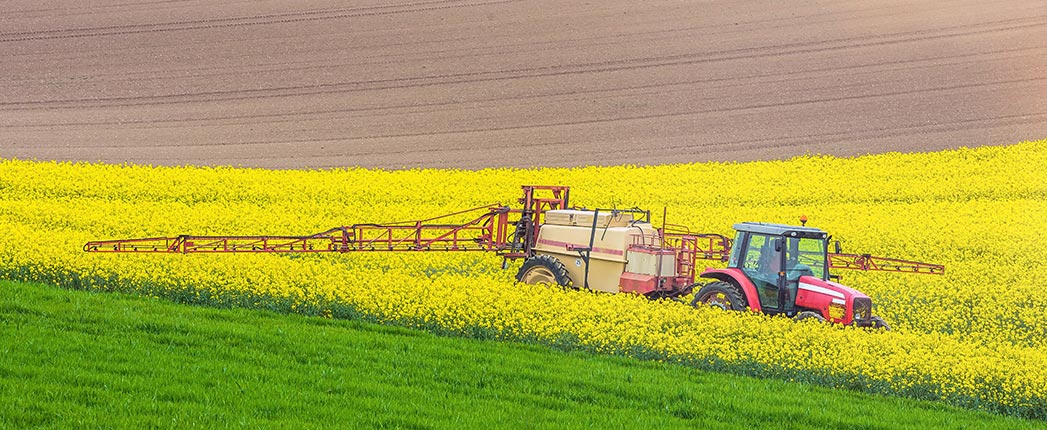
Despite setbacks from the pandemic, demand for bio-lubricants should continue to grow faster than the overall global lubricants market, an analyst said during a July 30 webinar. North America remains the top consumer of bio-lubes by volume.
“Bio-lubricants, as any other type of economic and industrial activity, have been heavily impacted by the effects of COVID-19,” acknowledged Sharbel Luzuriaga, a project manager for Kline & Co. The pandemic will have a “dramatic negative effect on 2020,” and demand for bio-lubricants in the leading country markets covered in Kline’s most recent study will contract by 20%.
However, “we are pretty optimistic about the bio-lubricants market,” Luzuriaga continued. Growth is forecast to resume in 2021 and continue through 2024. In the most likely of three scenarios, the Parsippany, New Jersey-based consultancy anticipates that bio-lubes will enjoy a 3.5% compound annual growth rate from 2019 to 2024. The worst-case scenario predicts 1.6% growth rate, if adverse economic effects of the pandemic enhance consumers’ price sensitivity.
In past reports, Kline had estimated double-digit growth, but Luzuriaga emphasized that the average growth rate for bio-lubes is still well above the overall industry, which is likely to contract.
While there is no formal consensus in the industry on the definition of bio-lubricants, and regulatory parameters vary, Kline defines these products as being readily biodegradable – breaking down at least 60% within 28 days – renewable, or containing at least 25% bio-sourced carbon, and non-toxic.
According to Kline’s report, the global finished lubricants market in 2019 was 40.5 million tons, of which bio-lubricants accounted for less than 1% at 350,000 tons. North America consumes about half of the world’s bio-lubes by volume, followed by Europe with about a quarter of demand. Both regional markets are driven by strict environmental policies. Asia-Pacific and South America make up the remaining 25%.
The United States is the largest country market, accounting for about 40% of demand, “distantly followed” by Germany, South Korea, Brazil and Canada. However, the U.S. has one of the lowest rates of market penetration among the major bio-lube consuming countries, at just under 2%, mainly motivated by regulatory compliance. In Canada, where environmental awareness is the main driver, bio-lubes make up just over 3% of demand. Brazil has reached about 2.5%, but is highly price sensitive.
“There are untapped growth opportunities, considering the low penetration of bio-lubricants demand in some key country markets,” Luzuriaga observed. In fact, the U.S. is one of the fastest growing country markets, with uptake of bio-lubes expected at about a 4% compound annual growth rate from 2019 to 2024. Brazil will be slightly behind the U.S., and Canada will be at just under 3%.
Industrial applications continue to lead in bio-lubricant consumption globally, with hydraulic fluids making up the largest portion, followed by metalworking fluids, transformer oils and chainsaw oils. About 10% of bio-lubes in the U.S. and Canada are used in the commercial and consumer sectors – slightly higher in Canada.
“In Brazil, bio-lubricants are in demand for their performance and green credentials in mining and manufacturing industries,” Luzuriaga pointed out. Brazil is one of the few countries in the study where total lubricant demand is expected to grow rather than contract.
The top 10 players in the bio-lubes market account for 70% of production. Nearly all suppliers that exclusively produce bio-lubricants from biobased sources are located in the U.S., fulfilling demand created by the U.S. BioPreferred program. North American companies such as Novvi and Elevance also lead in the field of novel biobased synthetic base stock technologies, Luzuriaga said.
Kline is still analyzing the long-term effects of the pandemic on the bio-lubes market, Luzuriaga said, focusing on three market drivers: regulatory mandates, lubricant performance and cost.
“There is increased pressure in some regions for governments to postpone or cancel some environmental legislation that was scheduled to be enforced in the next two years,” he noted. For example, Luzuriaga said, there are concerns that implementation of the U.S. Environmental Protection Agency’s Vessel Incidental Discharge Act, which is meant to replace its Vessel General Permit and expand where environmentally acceptable lubricants are required, may be delayed. Marine lubricants are the most important drivers of bio-lubricant demand in North America.
In terms of improving performance, pandemic-motivated lockdowns have prevented research and development efforts from progressing, as researchers are unable to access their laboratories. “This area has been widely effected,” Luzuriaga said, adding that investment in R&D has been cut in order to reduce costs, and new development programs with customers have been put on hold.
Bio-lubricants’ cost-competitiveness has also taken a hit, as the recent decline in crude oil demand has lowered mineral base stock prices, widening the price gap between the two. In response, some biobased base stock suppliers redirected their focus to potential growth opportunities in low-volume, high-margin markets, such as cosmetics and toiletries, he said.
The study, published in July, is entitled “Bio-Lubricants: Market Analysis and Opportunities,” and includes regional coverage for the Americas, Europe and Asia.